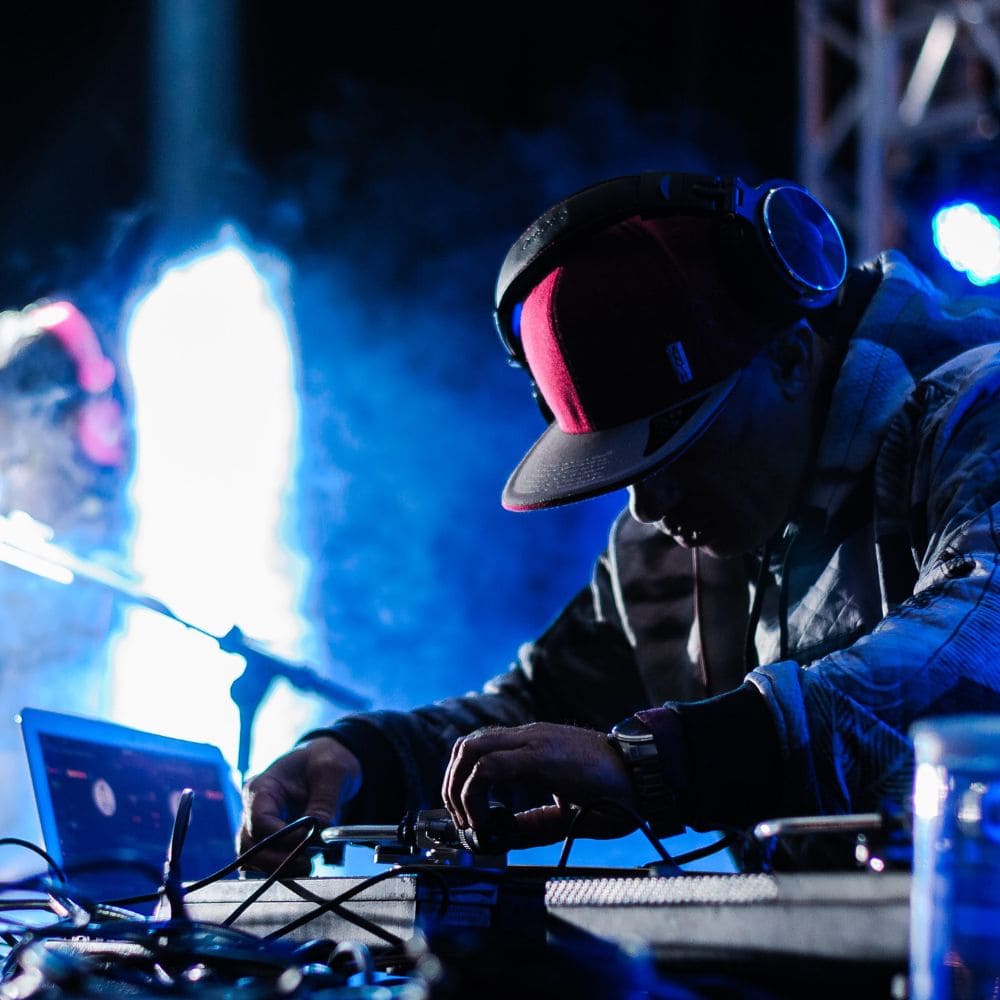What Size Subwoofer Do I Need to DJ?

Welcome to our comprehensive guide on selecting the best subwoofer size for DJing. Whether you're a beginner DJ or a seasoned professional, the right subwoofer size can make a significant difference in the quality of sound at your events.
In this article, we'll delve into the key factors to consider when choosing the correct subwoofer size for different DJ setups, helping you make an informed decision that elevates your sound experience.
The Best Subwoofer Size for DJing
When it comes to DJing, low-end power is crucial for shaking the dance floor and keeping the crowd moving. That's where subwoofers come in, adding the deep bass that regular speakers lack.
But what size subwoofer is right for a DJ?
Factors to Consider for Selecting the Right Subwoofer Size
When determining the best subwoofer size for DJing, several crucial factors come into play. The size of the venue, the type of event, and the desired sound quality all influence the choice of subwoofer size.
Let's explore these factors in detail to help you make an optimal decision:
Size of the Venue
- The size of the venue is a key factor in determining the appropriate subwoofer size. For larger venues, such as outdoor events or spacious indoor settings, a larger subwoofer may be necessary to effectively fill the space with deep, resonant bass. In contrast, smaller venues may require a smaller subwoofer to ensure balanced sound without overwhelming the space.
Type of Event
- The type of event also plays a significant role in choosing the right subwoofer size. Different events, such as live concerts, private parties, or corporate functions, have varying sound requirements. Understanding the nature of the event and the expected audience size will help in determining the ideal subwoofer size to deliver an immersive audio experience.
Desired Sound Quality
- Considering the desired sound quality is essential when selecting a subwoofer size. High-quality sound production is crucial for DJing, and choosing a subwoofer size that aligns with the desired sound quality is paramount. Factors such as bass response, clarity, and overall audio performance should be taken into account to achieve the best possible audio output.
Choosing the Correct Subwoofer Size for Different DJ Setups
Choosing the correct subwoofer size for different DJ setups requires a meticulous understanding of the unique audio demands of each setting.
Whether it's the vibrant energy of a mobile DJ setup, the immersive atmosphere of a club DJ setup, or the dynamic versatility of an event DJ setup, the choice of subwoofer size significantly influences the delivery of powerful and harmonious sound.
To cater to the diverse needs of varied DJ setups, it's essential to explore the nuanced considerations that go into selecting the right subwoofer size.
Mobile DJ Setups
When it comes to mobile DJ setups, portability and flexibility are key factors to take into account. A compact subwoofer size that can be easily transported and set up at different outdoor or indoor venues is highly advantageous.
- Additionally, the subwoofer should be capable of delivering sufficient bass to effectively energize the crowd and amplify the overall experience without overpowering the main speakers.
Club DJ Setups
- For club DJ setups, the emphasis is on creating an immersive and pulsating sonic environment. The subwoofer size chosen should complement the club's acoustics and aesthetic while ensuring deep, tight, and controlled bass that resonates throughout the dance floor.
- Integration with the existing sound system and compatibility with the venue's layout are critical aspects to consider to achieve a seamless and impactful audio experience for the club's patrons.
Event DJ Setups
- Event DJ setups demand adaptability and versatility in subwoofer size selection to accommodate diverse event spaces and audience sizes. The subwoofer should possess the power to fill larger venues with rich and well-defined bass, enhancing the atmosphere and ensuring that the music can be felt as well as heard.
- Furthermore, the ability to be configured in different setups, such as standalone subwoofer arrays or integrated with line arrays, is essential to provide the necessary coverage and distribution of low frequencies.
Different Subwoofer Sizes
Here's a breakdown of the most common subwoofer sizes and their suitability for different club and event settings:
- 8-inch: These compact subs are great for small house parties or intimate gatherings. They won't fill a large club, but they offer decent bass in tight spaces.
- 10-inch: A step up from 8-inch, offering more punch and reaching lower frequencies. Suitable for small to medium-sized events or mobile DJ setups.
- 12-inch: A versatile option for medium-sized events or clubs. They provide a good balance of power and portability, often being the sweet spot for mobile DJs.
- 15-inch: The industry standard for professional DJs. They deliver powerful bass for medium to large venues, clubs, and outdoor events.
- 18-inch: The kings of bass, offering earth-shaking low frequencies for large clubs, festivals, and outdoor stages. They require more power and space but create an immersive sound experience.
Several factors influence your subwoofer choice:
- Venue size: Bigger venues demand bigger subs. 12-inch or 15-inch subs are ideal for most clubs, while 18-inch monsters fit large venues and festivals.
- Music genre: Bass-heavy genres like EDM and hip-hop require more powerful subs (15-inch or 18-inch). For other genres, smaller subs (10-inch or 12-inch) might suffice.
- Portability: If you frequently move your setup, prioritize portability. Consider 10-inch or 12-inch subs for easier transport.
- Budget: Larger subs generally cost more. Choose a size that fits your budget while meeting your performance needs.
Additional Considerations:
- Passive vs. Powered Subs: Passive subs require separate amplifiers, while powered subs have built-in amps. Powered subs are more convenient but costlier.
- Single vs. Dual Subs: Using two smaller subs (e.g., dual 15-inch) can sometimes achieve similar output to a single larger one (e.g., 18-inch). Consider venue size and desired bass level.
- System Matching: Ensure your subs complement your main speakers in terms of power handling and frequency response.
Examples for Different Event Types:
- Small house party (20-30 people): 8-inch or 10-inch powered sub
- Mobile DJ setup (medium-sized events): 12-inch powered sub or dual 10-inch subs
- Club DJ (medium-sized venue): 15-inch powered sub or dual 12-inch subs
- Large club or festival: 18-inch powered sub or dual 15-inch subs
Remember, these are just general guidelines. Experiment and find the setup that delivers the optimal bass experience for your specific needs and audience.
Conclusion
Choosing the best subwoofer size for DJing is a significant decision that directly impacts the quality of sound at any event. By carefully considering the venue size, event type, and specific DJ setup requirements, DJs can make informed choices that elevate the overall sound experience.
With the right subwoofer size, DJs can ensure that their performances are backed by powerful, clear, and well-balanced sound. We hope this guide has provided valuable insights to help you make the best DJ subwoofer selection for your needs.
*FYI, when you make a qualifying purchase through one of our links, we might receive a small commission from Amazon or other retailers, at no additional cost to you, which helps us to fund this site. It's a way to find what you're looking for while supporting us in the process!
